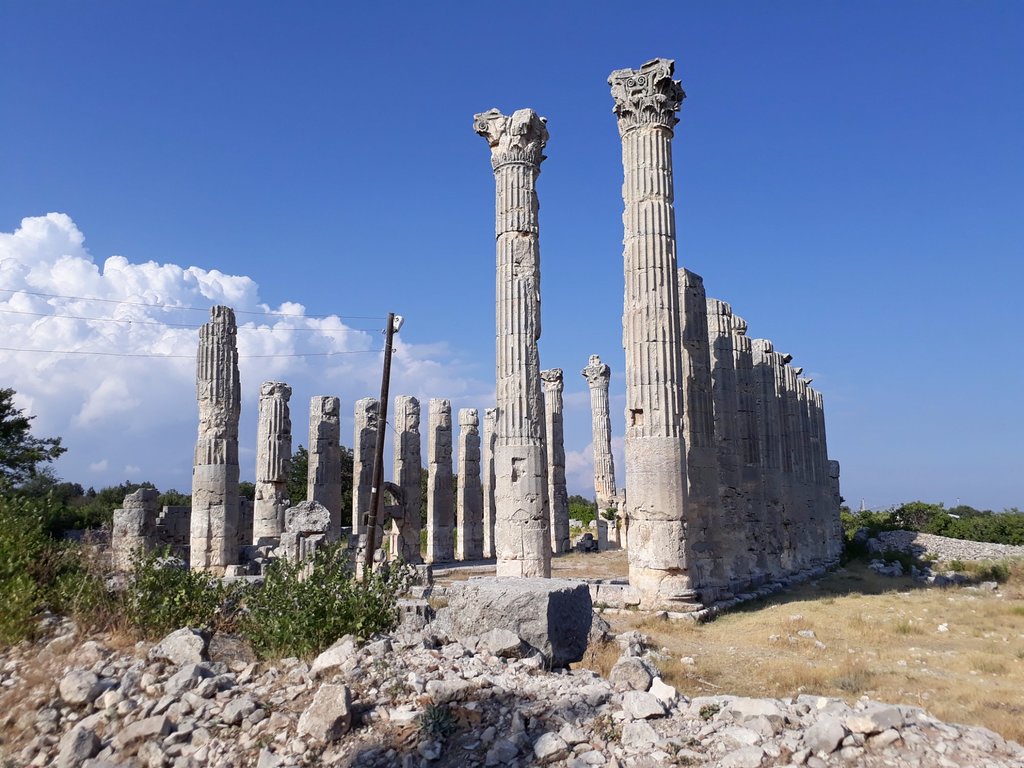Located within the boundaries of Mersin province, this ruin location is located in Silifke district. In the east of this ancient city, which is also very close to the town of Susanoğlu, there is another town with the same name. It is an ancient settlement that extends to the Empire of Seleucus. A temple from this period is among the buildings that have reached the present day. At the same time, the Olba Temple State has also had these lands. In 72 AD, this point, which was included in the borders of the Roman Empire, said that there was a different settlement at a point 4 km away from the old state. This city had its own right to print its own money. After the adoption of Christian belief, all the temples that were in this ancient place were turned into a church. The city was a religious center. The city was completely abandoned after the Arabs took over. With the Ottoman Empire dominated the region, the settlements were built in the east of this region and took the name of Uzuncaburç. Ancient theater, which is one of them, was built between 161-169 AD during the years of Lucius Verus. 05/Local-Net-133-15.jpg """"Alt ="""" Uzuncaburç "">
Ceremony gate is also located to the east of this area; It contains 5 different columns with a diameter of 1 meter and with a height of 7 meters. This historical monument has survived since the 1st century AD. Built in 305 BC, this temple was built surrounded by 36 columns. However, this temple is known to be used as a church in the 5th century AD. The entrance gate can be composed of three sections and still can be seen. The existing sarcophagi about the nobles of the city are located at various points in the region. The embossed details of these sarcophagi also draw attention. and ends at the Temple of Tyche. All of the columns in the columnous street from the 1st century were destroyed. Most of the architectural pieces have disappeared. & Nbsp;
ceremonial gate It is an imposing structure with columns. The five columns of the ceremony gate, half of which are demolished, are standing. The presence of consoles from the column bodies from the column bodies as in the Soli-Pompeiopolis is the evidence that there are sculptures on them. To the left of the column street, the Temple of Zeus in a courtyard is reached. The Temple of Zeus, which is thought to have been built by Seleukos Nikator I, has an important place in the history of art as one of the oldest temples with peripteros planned, peripteros planned, surrounded by 36 columns in Anatolia. The temple, also used by the Romans, was translated into the church with the changes made in the 5th century during the Christian Period. Cella was demolished and the columns were knitted and the doors were placed here, the columns in the east were removed and apsis were added to their places. 'It was built in the second half of the century. The inscription in the architrast, which is carried by six monolithic columns, five of which stands, reported that the temple of the temple was built by Oppius and his wife Kyria and his wife Kyria. > There are a large in the middle of the gate on the second-column road in the South-North direction and in the north of the Temple of Zeus and two small arched entrances with them. In the inscription on it, it is written that the Roman emperors Arcadius (395-408 BC) and Honorius (BC) and Honorius (BC) were repaired during their management. & NBSP;
Uzuncaburç Olba Ancient City, while you can visit many historical places and museums around Mersin. & Nbsp; You can add the historical place and the museum to your route.Where is the ancient city of Uzuncaburç Olba, entrance fee? You can visit the ancient city between 08:00 and 19:00 every day of the week. The entrance fee to the museum is 1 for adult 20 TL. Museum card holders can visit free of charge.


 English
English Türkçe
Türkçe